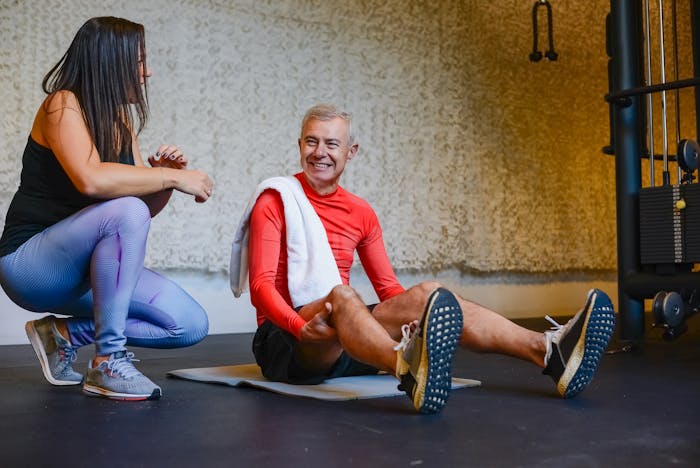Athletes push their bodies beyond everyday limits, striving for higher performance and faster recovery. Yet, with the intensity of modern training and competition, the risk of injury remains a constant shadow. Sports physiotherapy has become a vital part of athletic health, helping athletes recover after an injury and preventing these injuries from occurring in the first place. By focusing on movement mechanics, strengthening, and early detection of muscular imbalances, physiotherapy helps reduce the chances of long-term damage.
We will explore how sports physiotherapy proactively guards athletes against common injuries by building resilience, maintaining mobility, and promoting smarter training habits. Whether on the field, in the gym, or during training camps, physiotherapists, such as those at https://fixio.com.au/, are essential in keeping athletes at peak condition while reducing downtime due to preventable physical issues.
Preventative Strategies in Sports Physiotherapy That Keep Athletes in the Game
1. Correcting Movement Patterns to Avoid Injury Triggers
Many athletic injuries don’t occur from a single traumatic event but from repeated poor movement over time. Sports physiotherapy identifies faulty biomechanics and helps athletes correct them before they result in strain or injury. For example, an athlete who constantly shifts weight unevenly while running may eventually develop hip or knee pain due to repetitive stress. Through movement assessments like gait analysis and range-of-motion testing, physiotherapists observe subtle abnormalities that athletes might not notice.
Once identified, these movement issues can be addressed through customized training programs, stretching routines, or strengthening exercises tailored to restore proper alignment and mechanics. These adjustments reduce injury risk and improve athletic efficiency and power output. When an athlete’s form is refined, they are less likely to experience overuse injuries like tendinitis or shin splints, and more likely to perform at a higher level without interruption.
2. Strengthening Weak Muscle Groups to Support Joints and Ligaments
Muscular imbalances are a major contributor to many sports-related injuries. When one group of muscles is significantly stronger than its counterpart, it can place unnecessary stress on joints, tendons, and surrounding tissues. A common example is the imbalance between the quadriceps and hamstrings, which can increase the risk of hamstring strains or knee injuries. Sports physiotherapy involves evaluating these imbalances and creating a strengthening plan that harmonizes opposing muscle groups. This approach supports joint stability and ensures that the body functions as a cohesive unit under stress. Strengthening smaller stabilizing muscles is just as important as building major muscle groups. Targeted strengthening around the shoulders, ankles, and core can significantly reduce the risk of dislocations, sprains, or stress fractures. By reinforcing the body’s natural support structures, athletes are better equipped to handle the physical demands of their sport without breakdown or fatigue-related injury.
3. Implementing Flexibility and Mobility Routines for Injury Prevention
While strength and endurance are often prioritized in training, flexibility and mobility are essential for keeping athletes injury-free. Limited joint mobility or tight muscle groups can compromise form and increase the risk of strain, especially under rapid or complex movements. Sports physiotherapy introduces structured flexibility training to prevent these issues. Stretching routines—dynamic or static—are prescribed based on the athlete’s sport, position, and individual needs. For instance, a swimmer may focus more on shoulder and back mobility, while a soccer player might prioritize hip and hamstring flexibility.
Additionally, myofascial release techniques and foam rolling may be incorporated to reduce muscle tightness and increase circulation. These strategies enhance tissue health and allow athletes to maintain full functional range in their joints. By addressing restrictions in movement before they become painful or injurious, physiotherapists help athletes maintain fluidity and agility, key elements in injury prevention.
4. Educating Athletes on Body Awareness and Recovery Techniques
A crucial aspect of sports physiotherapy is athlete education. Injury prevention doesn’t just happen during scheduled therapy sessions—it relies heavily on the athlete’s ability to understand and respond to their body’s signals. Physiotherapists guide athletes in recognizing signs of strain, fatigue, or muscular compensation before these symptoms escalate into injury. This awareness empowers athletes to adjust their training intensity or seek early intervention.
Furthermore, physiotherapists teach proper warm-up and cool-down routines tailored to each individual’s sport. Recovery practices such as contrast baths, compression therapy, and active rest are also discussed to reduce inflammation and enhance muscle repair. Athletes who understand how to manage their recovery and avoid overtraining are less likely to experience setbacks. By instilling these habits, physiotherapists create a culture of proactive care where prevention becomes part of the athlete’s daily regimen, not just a reaction after injury occurs.
Preventing injuries is as critical as treating them, especially in the fast-paced and demanding world of athletics. Sports physiotherapy is central to this proactive approach, focusing on movement efficiency, muscular balance, flexibility, and athlete education. Correcting a runner’s stride, strengthening the core, or implementing proper recovery contribute to building a more resilient athlete. By integrating these preventive strategies into daily training, athletes reduce their chances of being sidelined and confidently enhance their performance.
We have explored the various ways physiotherapy helps athletes stay ahead of injuries before they occur. Staying injury-free isn’t just a matter of luck; it results from deliberate planning, professional guidance, and consistent care. Through sports physiotherapy, athletes gain the tools they need to perform better and train longer, recover faster, and maintain their physical potential season after season.


